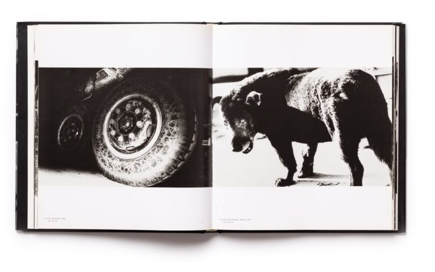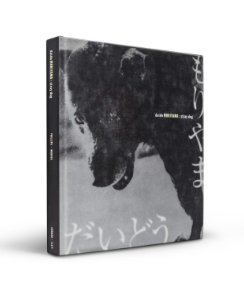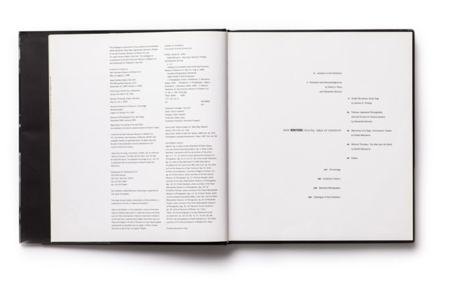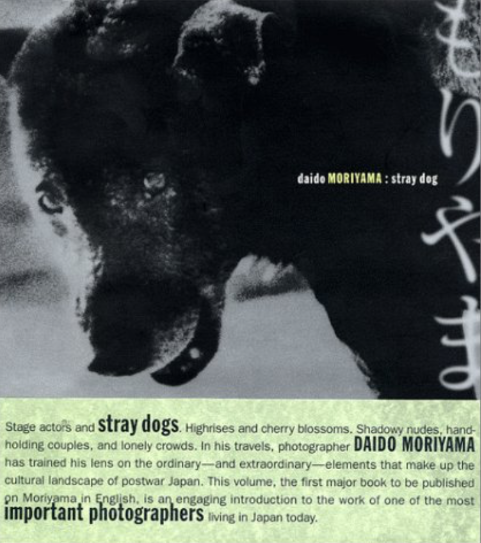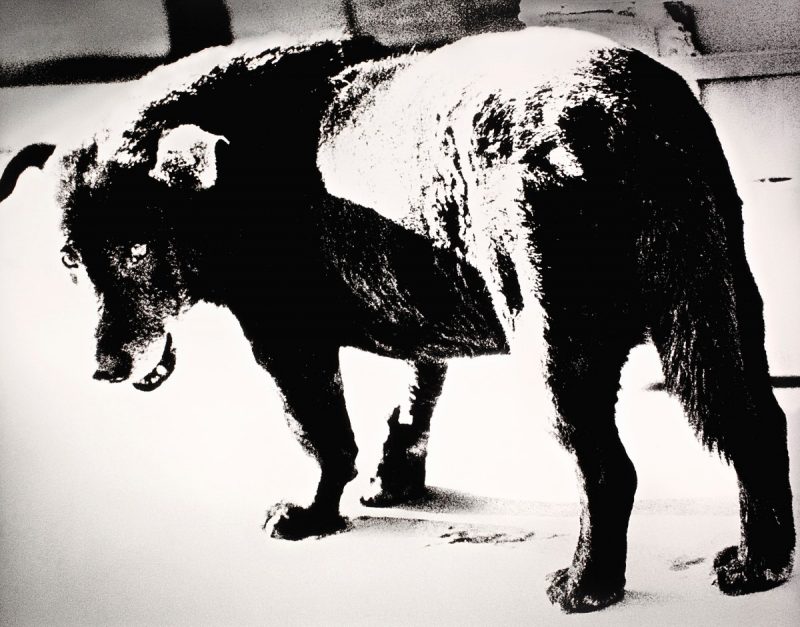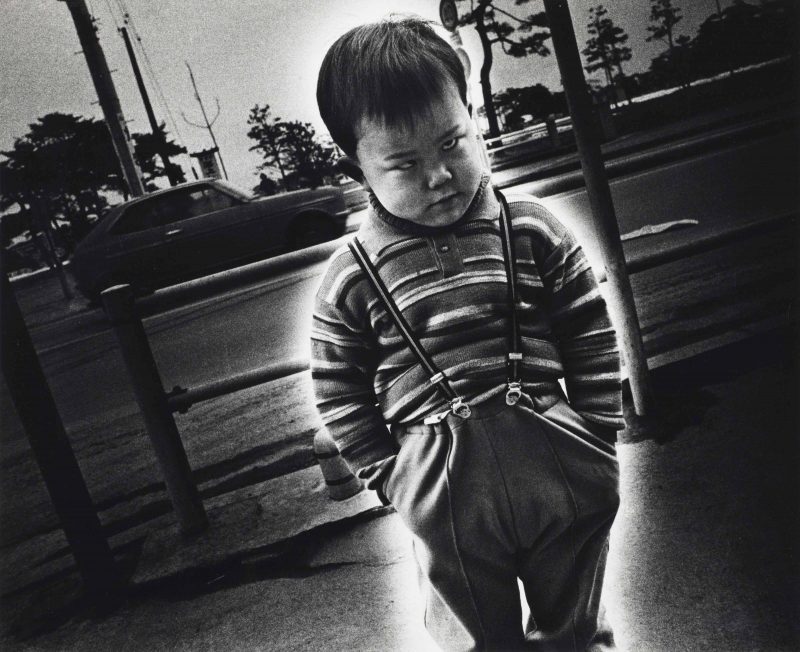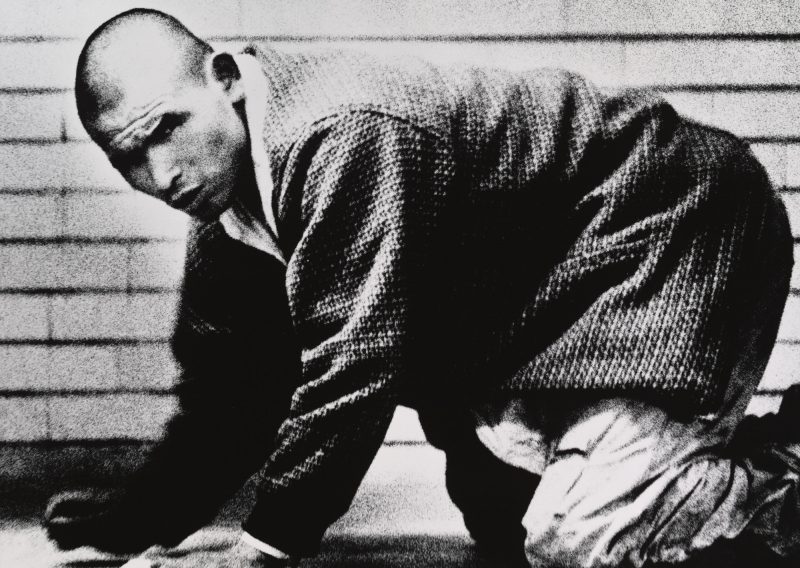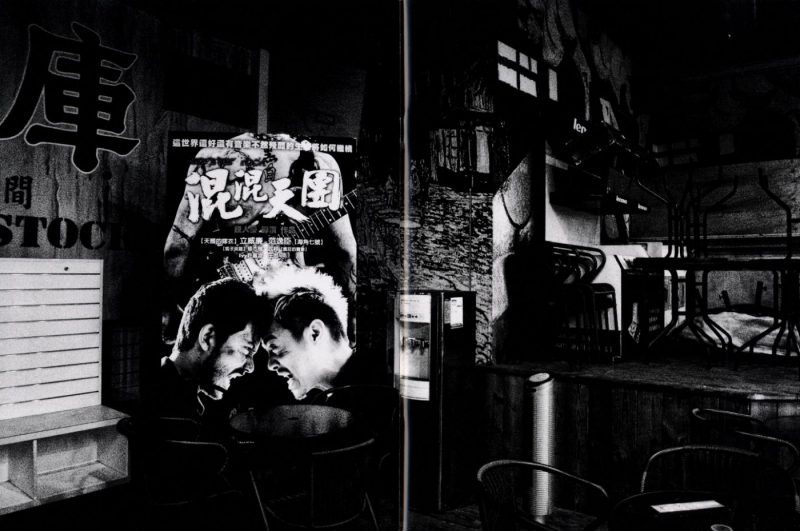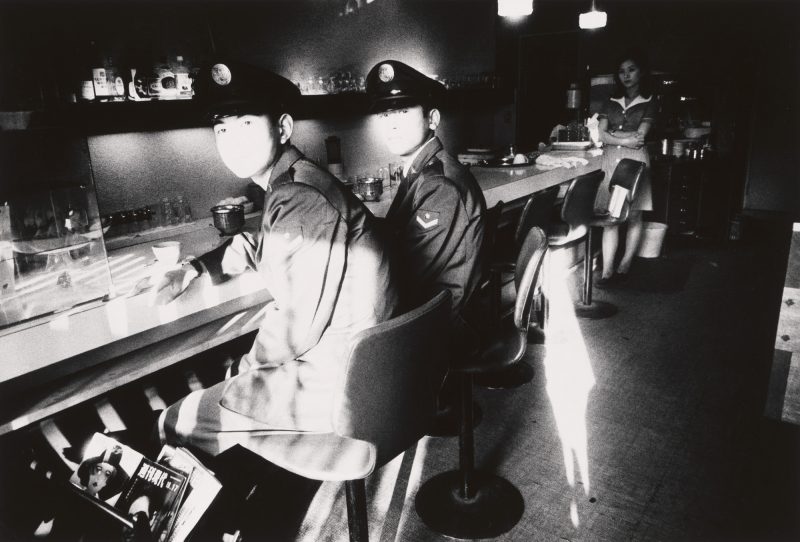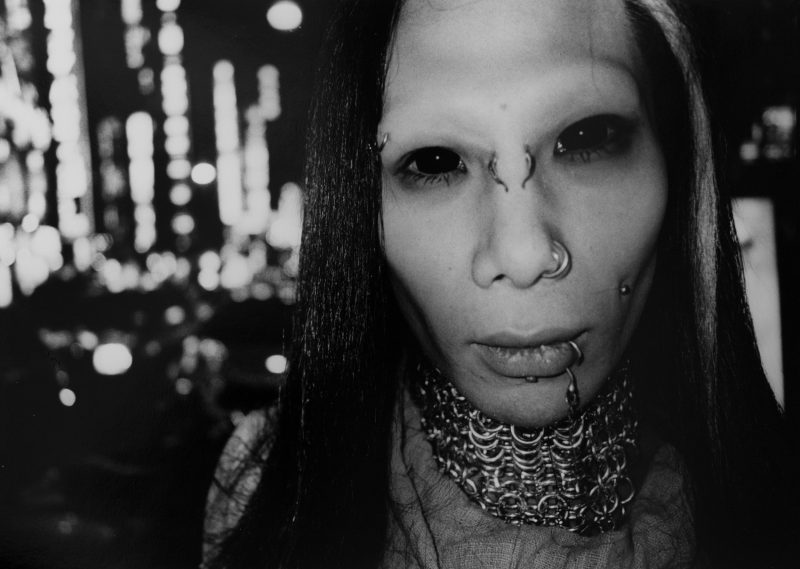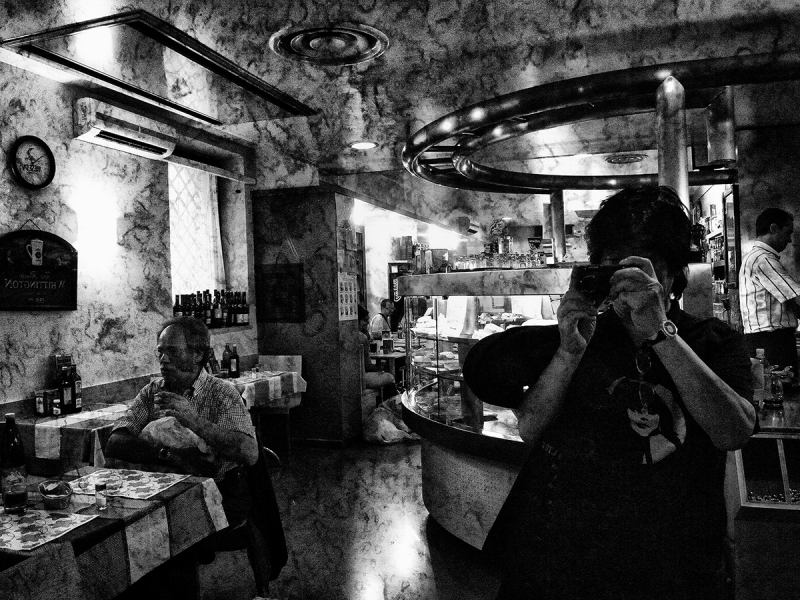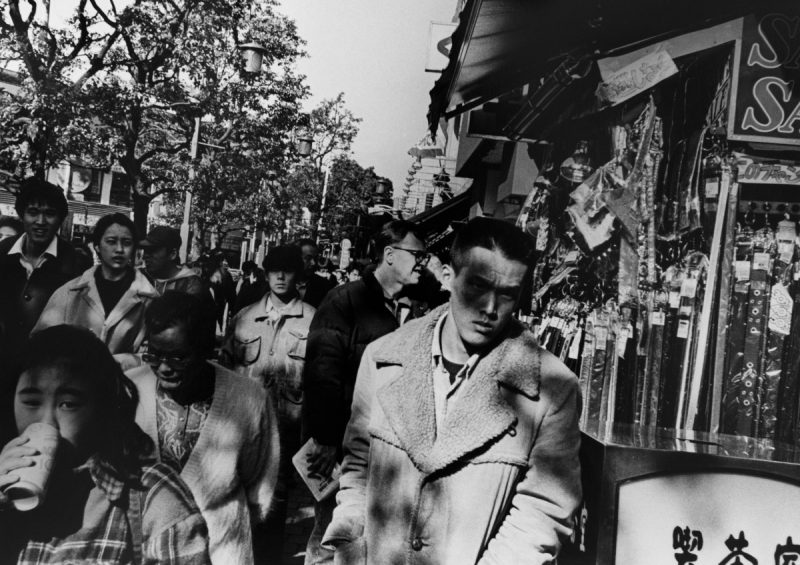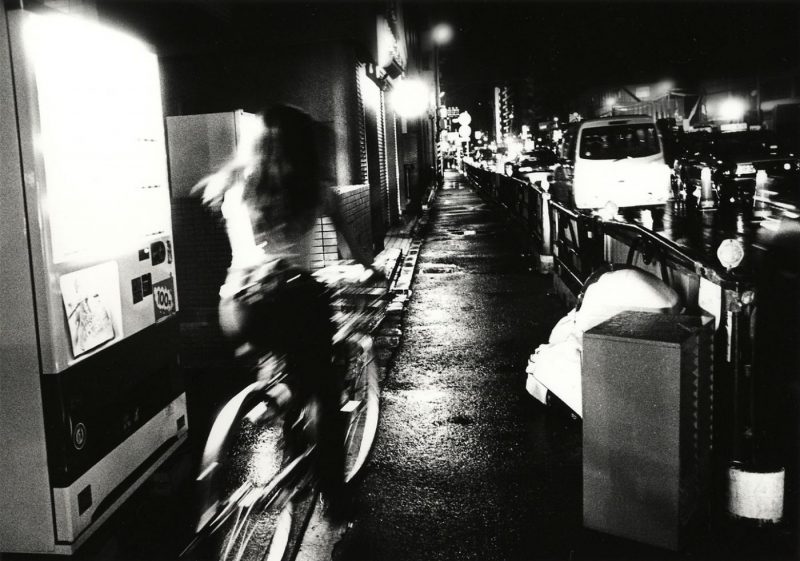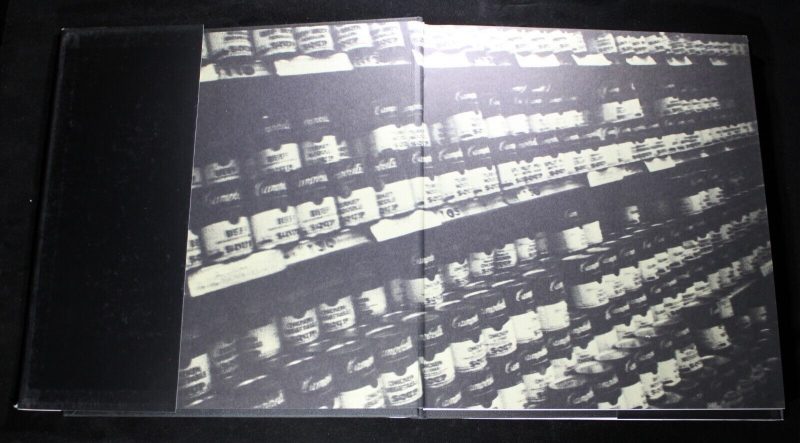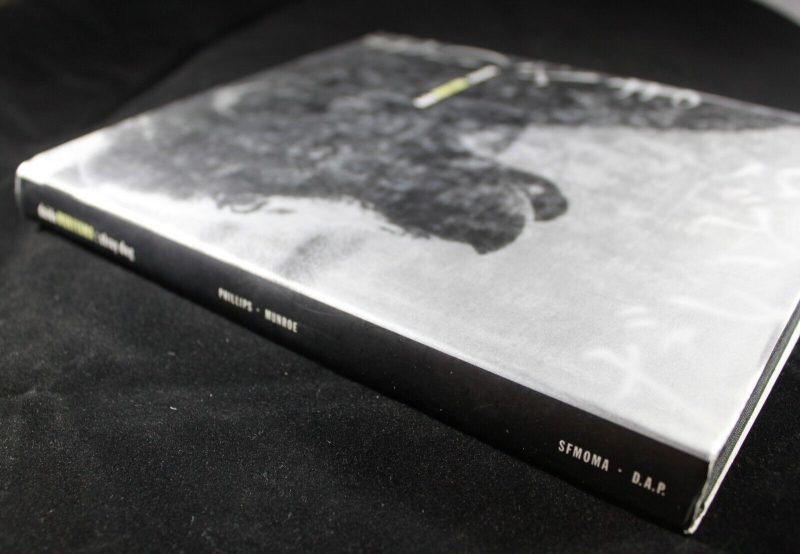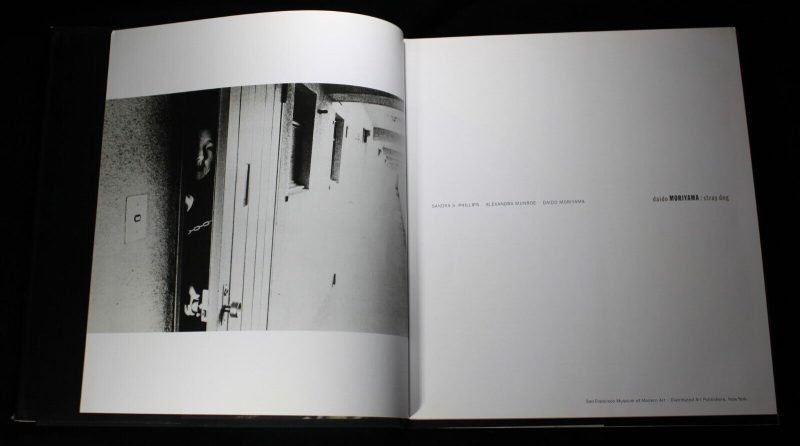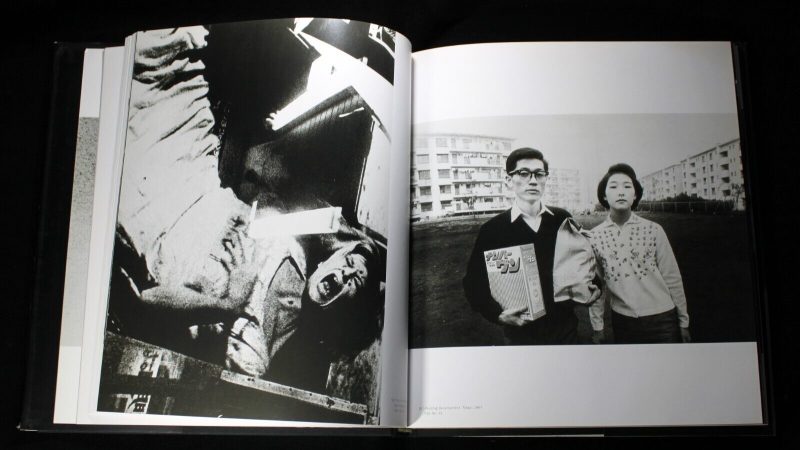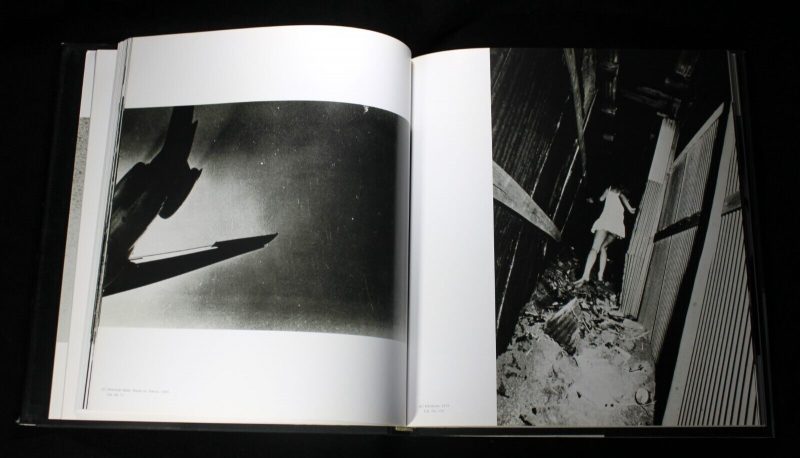Daido Moriyama: Stray Dog 1999
Daido Moriyama: Stray Dog 1999
Alexandra Munroe; Sandra Phillips; Daido Moriyama
Published by D.A.P./San Francisco Museum of Modern Art, 1999
First Edition. Catalogue of Exhibition. 1999
Title: Daido Moriyama: Stray Dog
Publisher: D.A.P./San Francisco Museum of Modern Art
Publication Date: 1999
Binding: Hardcover
Condition: Very Good
Dust Jacket Condition: Very Good
Edition: 1st Edition
Synopsis:
About the Author:

Daido Moriyama: Investigations of a Dog (1999)
Stray Dog, Misawa, Aomori (1971)
Moriyama is conspicuous for the brutality with which he distorts photographic description: his pictures are sooty with grain, blotchy with glare, often out of focus or blurred by movement, often defaced by scratches in their negatives.
By Leo Rubinfien, October, 1999
The photographer Daido Moriyama, whose first U.S. retrospective is now on view in New York, has spent the last 35 years elaborating a somber, alienated vision of postwar Japan. Moriyama is the author of over 20 books of photographs–notably Nippon Theatre (1968), Hunter (1972), Farewell to Photography (1972) and Light and Shadow (1982)(1). His current retrospective, “Daido Moriyama: Stray Dog,” was organized by Sandra Phillips, curator of photography at the San Francisco Museum of Modern Art, in collaboration with Alexandra Munroe, director of the Japan Society Gallery in New York.
While the writers, filmmakers and architects of contemporary Japan have long enjoyed great respect in the West, its painters and photographers have not. Moriyama’s is the first full retrospective given to any Japanese photographer by an American museum of the first rank. The show reminds us that not all of the finest modern art has been the product of Europe, Russia or the Americas. The accompanying catalogue should be obtained for any library concerned with contemporary photography or Asian modernism.
“Vintage” prints have generally been thought less important in Japan than in the West. Although none of Moriyama’s work is more than four decades old, many prints that he made in his early years have been lost or destroyed. Nevertheless, thanks to a remarkable effort by Phillips, the present show consists largely of early prints, which are unlikely to be brought together again soon. These images have a tentativeness that is often absent from Moriyama’s later prints, and that gently offsets the fierce subject matter of his pictures.

